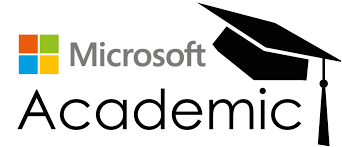Profile of Junior High School Students' Critical Thinking Skills in Science Learning Using Lectora Inspire Learning Media
Abstract
Critical thinking skills are one of the competencies that must be possessed by students in the 21st Century. This study aims to analyze the level of critical thinking skills of junior high school students in science learning using the learning media lectora inspire. This research is quantitative descriptive. The subjects used in this study were 30 class VIII students of SMP N 5 Depok Sleman. The sampling technique was carried out using a purposive sampling technique. The data collection technique uses test instruments in the form of critical thinking skills questions totaling 10 questions. Data analysis carried out in this study was a quantitative analysis. This study obtained the results that in terms of frequency the level of students' critical thinking skills obtained an average score of 73.04 in the high category level and classically obtained an average score of 54.05 in the medium category.
Keywords
References
Amhar, Sabrina, R., Sulasmi, E., Saragih, M. (2022). Student critical thinking skills and student writing ability: The role of teachers’ intellectual skills and student learning. Cypriot Journal of Educational Science, 17(7), 2493-2510. https://doi.org/10.18844/cjes.v17i7.7683
Astutik, M., & Rusimamto, P. W. (2016). Pengembangan Media Pembelajaran Multimedia Interaktif Berbantuan Software Lectora Inspire untuk Meningkatkan Hasil Belajar pada Mata Pelajaran Teknik Listrik di SMK Negeri 2 Surabaya. Jurnal Pendidikan Teknik Elektro, 5(1), 107–114.
Bevins, S., & Price, G. (2016). Reconceptualising inquiry in science education. International Journal of Science Education, 38(1), 17–29. https://doi.org/10.1080/09500693.2015.1124300
Hussin, W. N. T. W., Harun, J., & Shukor, N. A. (2018). Problem based learning to enhance students critical thinking skill via online tools. Asian Social Science, 15(1), 14.
Kartika, A.T., Eftiwin, L., Lubis, M.F., & Walid, A. (2021) Profil Kemampuan Berpikir Kritis Siswa Kelas VIII SMP Pada Mata Pelajaran IPA. Jurnal Riset Teknologi dan Inovasi Pendidikanp-ISSN: 2622-4763| e-ISSN: 2622-2159| Vol. 3, No.1
Khaerunnisa, N., Jumadi, J., Indahsari, H. K.., & Utami, A. R. . (2022). The Role of Parents and Tutors in Science Learning during Covid-19 Pandemic. Jurnal Penelitian Pendidikan IPA, 8(3), 1108–1113.https://doi.org/10.29303/jppipa.v8i3.1279
Kusumah, R. G. T. (2019). Peningkatan Kemampuan Berpikir Kritis Mahasiswa Tadri IPA Melalui Pendektan Saintifik Pada Mata Kuliah IPA Terpadu. Indonesia Journal of Science Education / IJIS Edu, 1 (1), 71–84. https://doi.org/http://ejournal.iainbengkulu.ac.id/index.php/ijisedu
Nurkholifah, & Mayasari, T. (2018). profil berfikir kritis pelajaran fisika siswa SMP. Seminar Nasional Quantum, (25)
Nuryanti, Lilis., Siti Zubaidah, Markus Diantoro (2018) Analisis Kemampuan Berpikir Kritis Siswa SMP. Jurnal Pendidikan: Teori, Penelitian, dan PengembanganVolume: 3Nomor: 2 Bulan Februari Tahun 2018 Halaman: 155—158
Pursitasari, I. D., Rubini, B., & Firdauz, F. Z. (2022). Feasibility of eco-literacy-based interactive teaching material to promote critical thinking skills. Cypriot Journal of Educational Science. 17(6), 2105-2116. https://doi.org/10.18844/cjes.v17i6.7505
Sabekti, A. W., & Khoirunnisa, F. (2018). Penggunaan Rasch Model Untuk Mengembangkan Instrumen Pengukuran Kemampuan Berikir Kritis Siswa Pada Topik Ikatan Kimia. Jurnal Zarah, 6(2), 68–75. https://doi.org/10.31629/zarah.v6i2.724
Setiawati, H., & Corebima, A. D. (2017). Empowering critical thinking skills of the students having different academic ability in biology learning of senior high school through PQ4R - TPS strategy. The International Journal of Social Sciences and Humanities Invention, 4(5), 3521–3526. https://doi.org/ 10.18535/ijsshi/v4i5.09
Shalikhah, N. D., Primadewi, A., & Iman, M. S. (2017). Media Pembelajaran Interaktif Lectora Inspire Sebagai Inovasi Pembelajaran. Media Pembelajaran Interaktif Lectora Inspire Sebagai Inovasi Pembelajaran, 20(1), 9–16.
Suryawati, E., Suzanti, F., Suwondo, S., & Yustina, Y. (2018). The implementation of school-literacymovement: Integrating scientific literacy, characters, and HOTS in science learning. Jurnal Pendidikan Biologi Indonesia, 4(3), 215–224. https://doi.org/10.22219/jpbi.v4i3.6876
Swart, R. (2017). Critical thinking instruction and technology enhanced learning from the student perspective: A mixed methods research study. Nurse Education in Practice, 23, 30-39. https://doi.org/10.1016/j.nepr.2017.02.003
Vong, S. A., & Kaewurai, W. (2017). Instructional model development to enhance critical thinking and critical thinking teaching ability of trainee students at regional teaching training center in Takeo province, Cambodia. Kasetsart Journal of Social Sciences, 38(1), 88–95. https://doi.org/10.1016/j.kjss. 2016.05.002
Zuhri, M. S., & Rizaleni, E. A. (2016). Pengembangan Media Lectora Inspire dengan Pendekatan Kontekstual pada Siswa SMA Kelas X. Jurnal Inovasi Dan Pembelajaran Fisika, 5(2), 113–119.
DOI: https://doi.org/10.18269/jpmipa.v28i1.53773
Refbacks
- There are currently no refbacks.
Copyright (c) 2024 Universitas Pendidikan Indonesia (UPI)

This work is licensed under a Creative Commons Attribution-ShareAlike 4.0 International License.
JPMIPA http://ejournal.upi.edu/index.php/jpmipa/index is licensed under a Creative Commons Attribution-ShareAlike 4.0 International License
Jurnal Pengajaran Matematika dan Ilmu Pengetahuan Alam (JPMIPA) or Journal of Mathematics and Science Teaching
All rights reserverd. pISSN 1412-0917 eISSN 2443-3616
Copyright © Faculty of Mathematics and Science Education (FPMIPA) Universitas Pendidikan Indonesia (UPI)
View JPMIPA Stats









